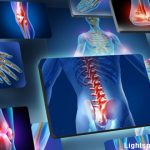The authors concluded that dex could increase BMD via corticosteroid-induced alterations of lymphocyte populations. They suggest that lymphocytes produce pro-inflammatory cytokines that induce osteoclasts and inhibit osteoblasts. Glucocorticoids have a suppressive effect on lymphocytes, which could underlie glucocorticoid’s effect on bone.
The authors note that their results are controversial and contradict previous studies that have been performed on other strains of mice. They suggest their findings may indicate that the increase in trabecular bone density linked with dex treatment is associated with corticosteroid-induced alterations of the lymphocyte populations. (posted 12/19/14)
Lara C. Pullen, PhD, is a medical writer based in the Chicago area.
Reference

